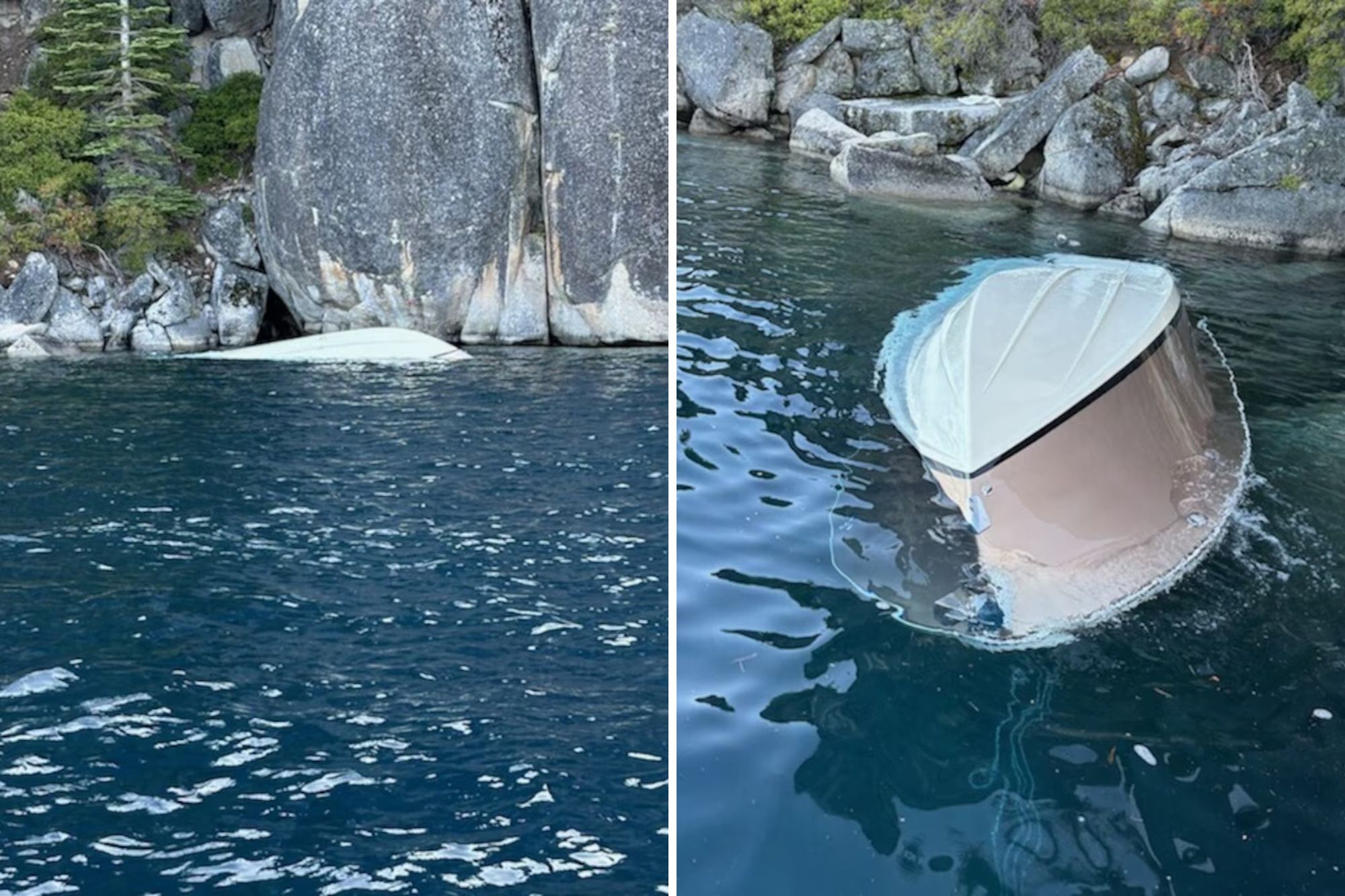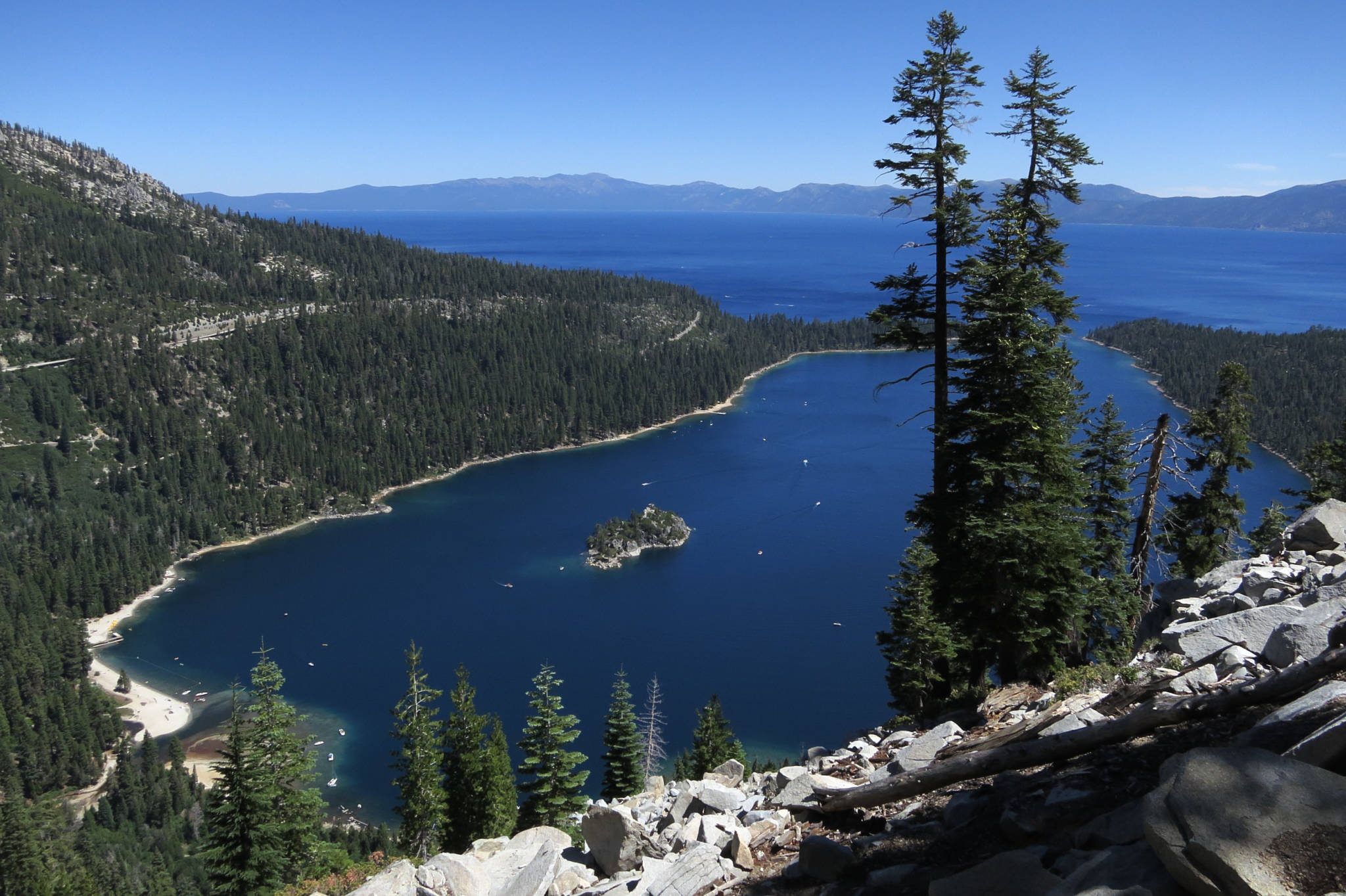Whereas winds above Lake Tahoe usually blow southwest to northeast, Saturday’s storm brought north-to-south gusts, spanning the longest direction of the oval-shaped lake.
“The winds just push the water from one side of the lake going to the other, and it just builds up and waves’ heights get higher and higher,” Chyba said.
The area where the boat sank, near Emerald Bay, is on the southern end of the 22-mile-long lake.
A sharp drop in temperature in Tahoe allowed for the storm conditions to sweep in so quickly, Chyba said. Throughout the week, he said, temperatures hovered in the mid-70s to 80s, but on Saturday they dropped to between 15 and 25 degrees below average.
“The system came through and just really, really cooled things down and allowed for conditions to bring these kinds of winds,” he told KQED.
Michael Cane, a lab director and boat captain at UC Davis’s Tahoe research center, said the shoreline where the boat was located is also quite rocky and can be hard to access, which could have made it more dangerous for the people on board to get to shore.
He said the storm came up quickly and could have taken boaters by surprise.
“I run a lot of vessels on the lake, and we’re always looking at the weather and the forecast and paying really close attention to that, because even when you’re about to go on a lake and it’s calm, it can change quickly,” he told KQED.
Cane hopes that those who choose to go out on the lake will take proper precautions, like wearing life vests, and come into shore at the first clues of an approaching storm.
“I pay attention to large clouds falling over the mountains, which could signify thunder showers, or look in the distances to see if there’s whitecaps coming towards me and try to pay attention to those things so that I can avoid getting involved in those dangerous situations,” he said.



